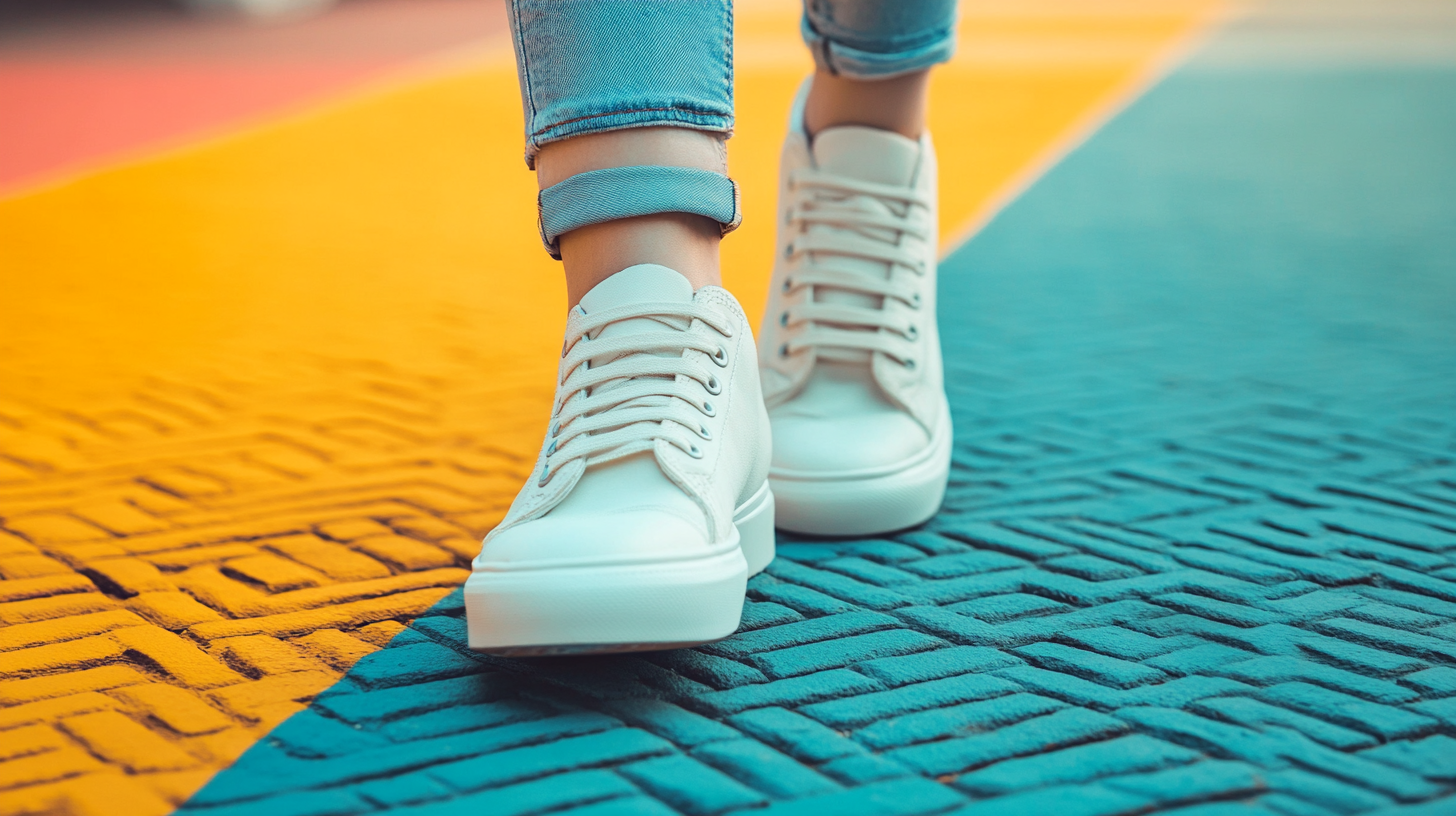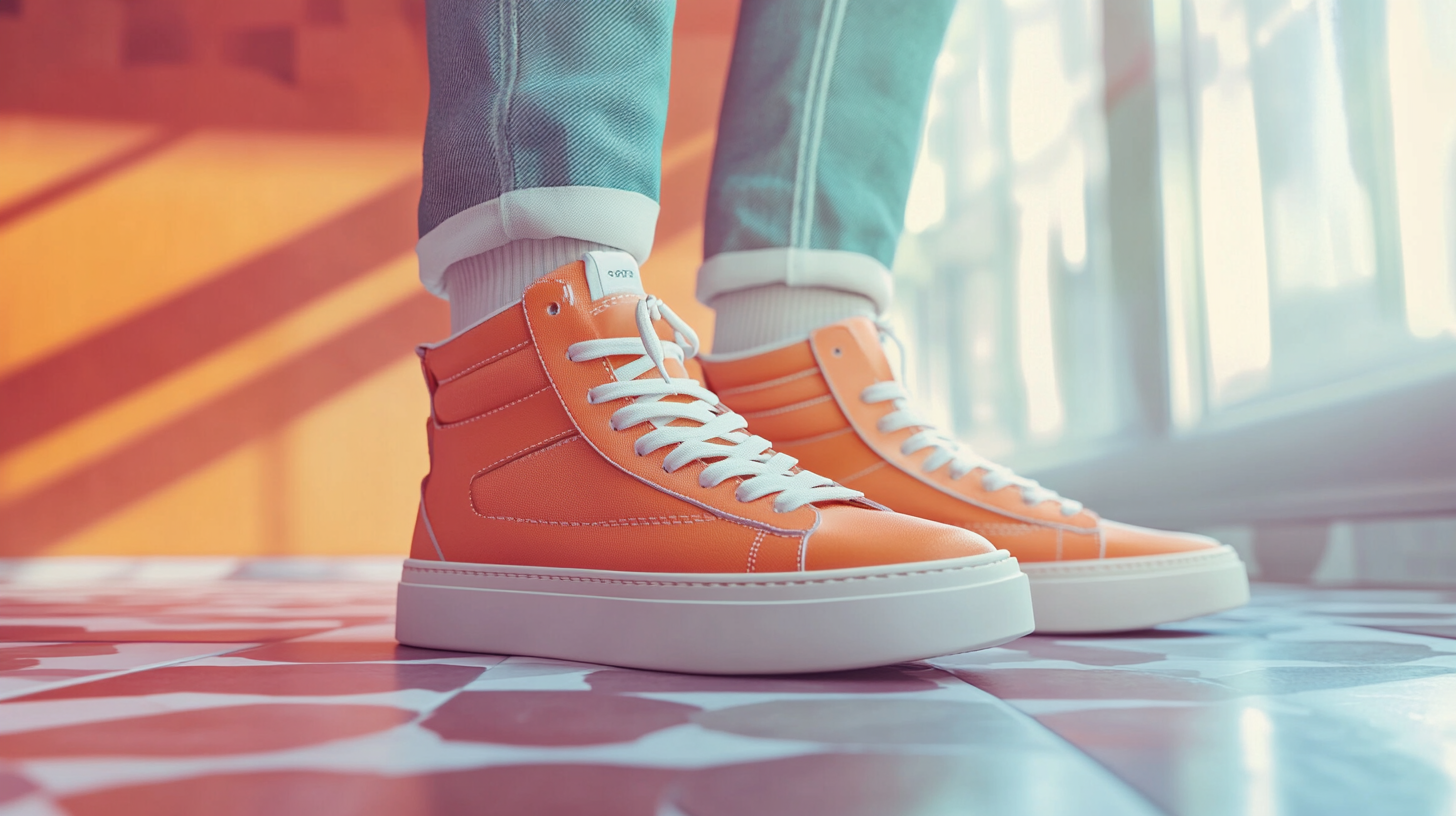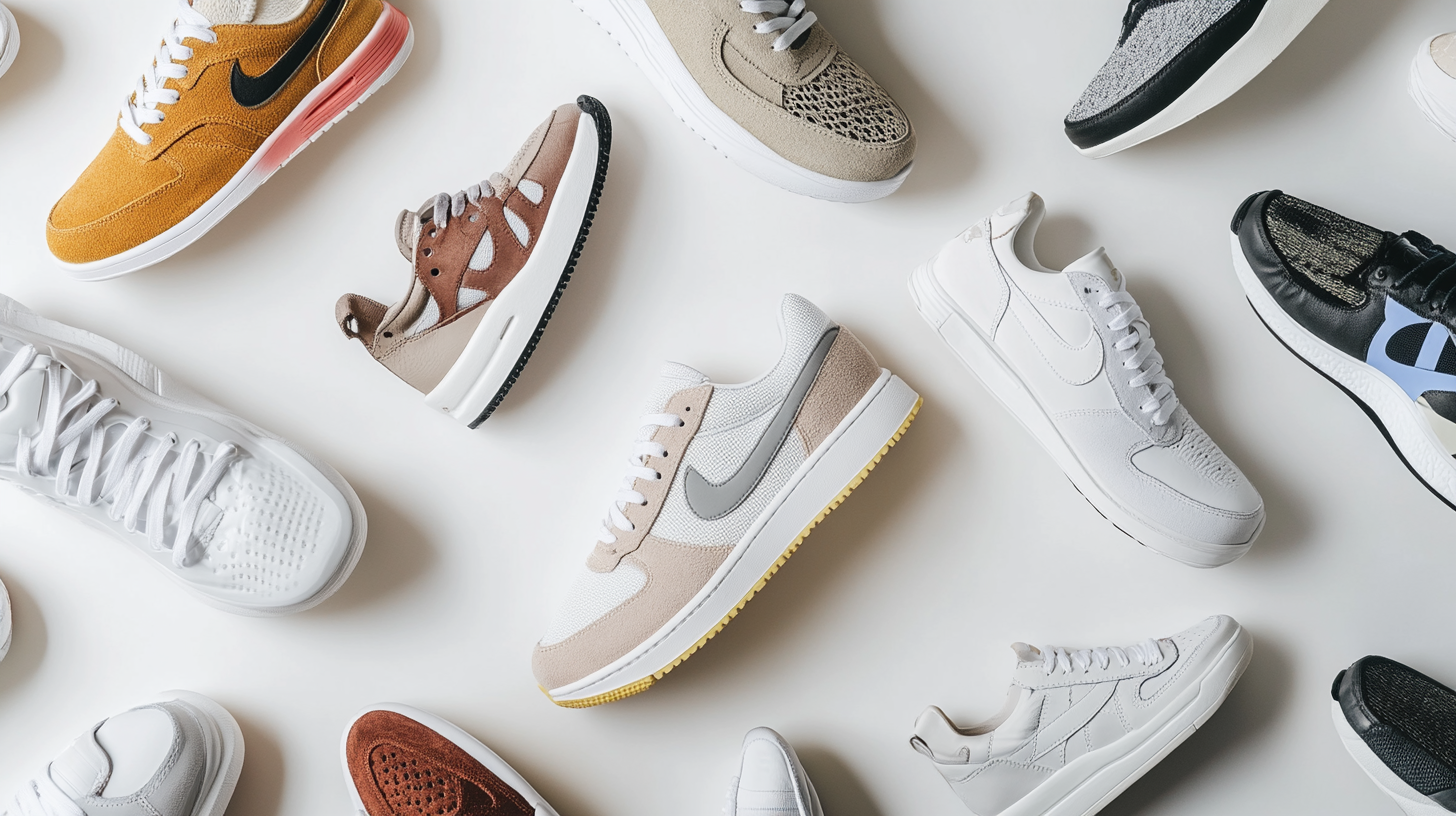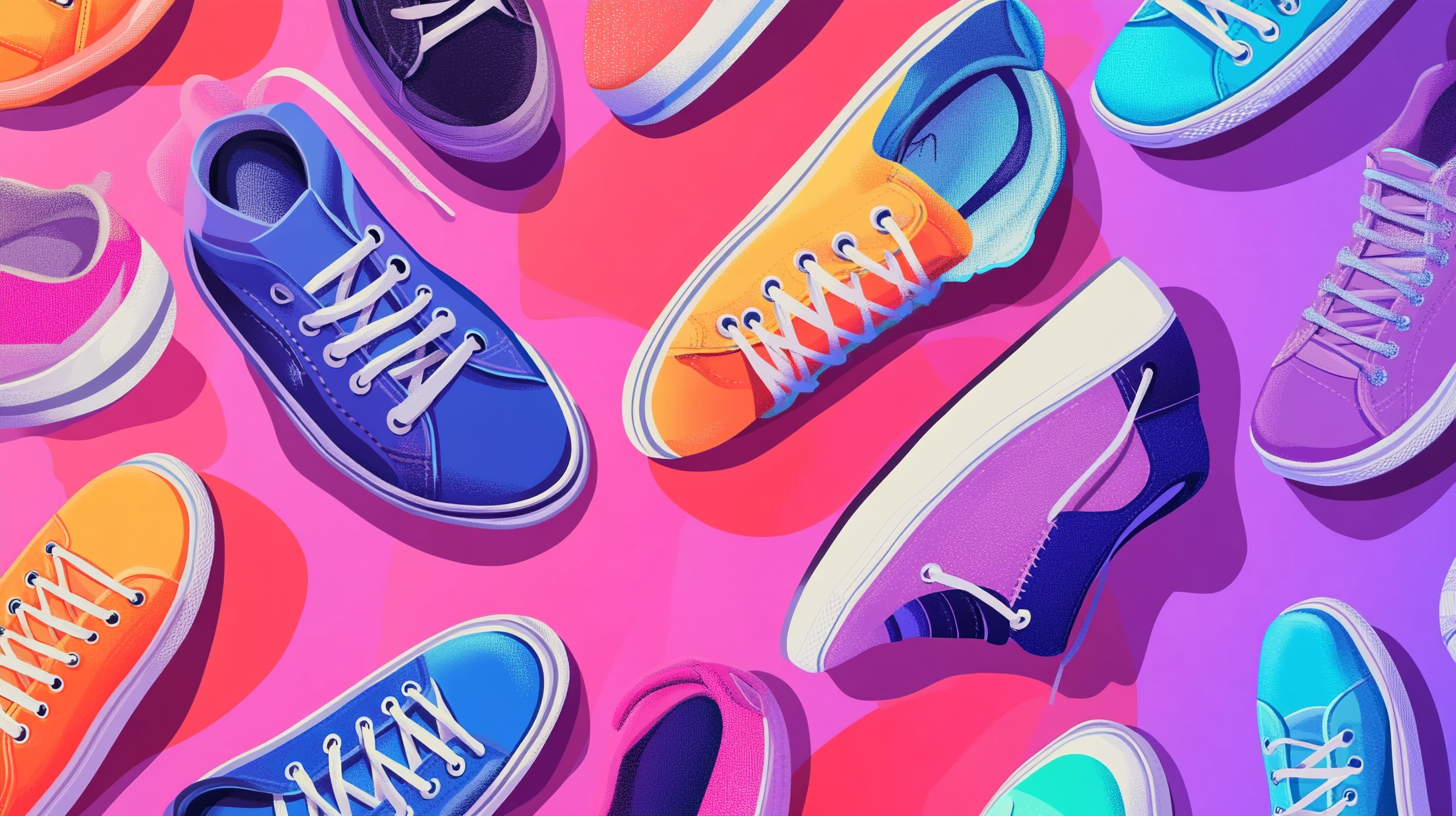
In the fast-paced world of fashion, casual sneakers have emerged as a staple, redefining not just footwear but lifestyle choices globally. As we look ahead to 2025, the sneaker market is poised for exciting transformations driven by changing consumer preferences, sustainability concerns, and innovative designs. Brands striving to stay relevant must focus on sourcing the best casual sneakers that resonate with their target audiences, blending comfort, style, and functionality. This blog aims to explore the latest trends in casual sneakers and provide insights on how businesses can effectively source products that meet evolving market demands.
Understanding global sneaker trends is crucial for any business looking to thrive in this competitive industry. The rise of athleisure has paved the way for casual sneakers to dominate not only the streets but also the fashion runways. As we navigate the cultural shifts and technological advancements influencing consumer behavior, businesses must adopt strategic sourcing methods to identify the most sought-after styles. Join us as we delve into the vital components of sourcing casual sneakers that not only enhance brand appeal but also cater to the ever-evolving tastes of sneaker enthusiasts around the world.

As we look ahead to 2025, the evolution of casual sneaker trends reveals a vibrant landscape reflecting both nostalgia and innovation. The shift away from previously dominant styles signals a return to classic aesthetics, notably the resurgence of timeless white sneakers. Such trends are reinforced by recent consumer sentiment, as fashion enthusiasts in hubs like Paris and London increasingly gravitate towards distinctive styles that blend functionality with flair. New sneakers such as hybrid designs are also taking center stage, effectively merging the comfort of traditional athletic shoes with the elegance of casual footwear. Celebrities and influencers, especially those at the forefront of trends, have embraced these unique silhouettes, suggesting a shift in consumer behavior that prioritizes versatility without compromising style. Reports are indicating a significant interest in nostalgic favorites alongside cutting-edge designs, which is evident in the continued popularity of specific models gaining traction among style-savvy communities. Moreover, as brands adapt to emerging preferences, they are expected to uncover fresh opportunities within the market, especially considering the economic uncertainty ahead. McKinsey's annual sporting goods industry report emphasizes this balancing act, highlighting the necessity for brands to align with evolving consumer desires. To capitalize on these trends, businesses must focus on sourcing sneakers that not only resonate with the current zeitgeist but also deliver the comfort and practicality that modern consumers demand. As we navigate the sneaker culture of 2025, we can anticipate a dynamic fusion of innovation, self-expression, and classic appeal driving the market forward.

As we move into 2025, the demand for casual sneakers is being profoundly shaped by several key market drivers. One of the most notable influences is the rise of athleisure culture, which merges performance with everyday fashion. Consumers are increasingly looking for footwear that can seamlessly transition from workout sessions to casual outings, prompting brands to innovate in both style and function. This trend encourages businesses to source sneakers that not only boast aesthetic appeal but also provide the comfort and durability necessary for an active lifestyle.
Another significant factor is the growing emphasis on sustainability among consumers. As awareness around environmental issues increases, shoppers are becoming more selective about the brands they support. Companies that prioritize eco-friendly materials and ethical manufacturing practices are likely to attract the environmentally conscious consumer. Thus, sourcing sneakers made from recycled or sustainable materials will be essential for businesses wishing to align with this shift in consumer preferences.
Furthermore, the influence of technology cannot be overlooked. The integration of smart features into casual sneakers, such as fitness tracking or enhanced cushioning systems, appeals to tech-savvy consumers looking for added value in their footwear choices. Brands that leverage innovative technologies in their designs will have a competitive edge in capturing this market. As a result, sourcing sneakers with advanced technological features will become a priority for businesses aiming to thrive in the evolving landscape of casual footwear.

As we look towards 2025, the sneaker industry continues to evolve, with sustainability and affordability becoming paramount considerations for businesses. According to a recent report by Allied Market Research, the global sneaker market is projected to reach $120 billion by 2025, with a significant portion of this growth driven by consumers increasingly prioritizing eco-friendly products.
To source the best casual sneakers, businesses must adopt top sourcing strategies that not only meet the demands of conscious consumers but also align with budget constraints. One effective strategy is to collaborate with suppliers that emphasize sustainable manufacturing processes. For instance, producing sneakers using recycled materials can reduce environmental impact and appeal to eco-conscious shoppers. A 2022 survey by McKinsey found that 67% of consumers are willing to pay more for sustainably produced products, highlighting the potential profitability of such investments.
Moreover, businesses can leverage digital platforms for sourcing to optimize costs and widen their reach. Utilizing sites like Alibaba and industry-specific sourcing platforms can connect brands with manufacturers who prioritize both affordability and sustainable practices. Reports suggest that the use of technology in the sourcing process can lead to a reduction in lead times by up to 50%, enabling brands to react more swiftly to market trends and consumer demands. By integrating these strategies, businesses can effectively position themselves in the competitive sneaker market while contributing to a more sustainable future.

Social media has transformed the landscape of consumer behavior, particularly in the sneaker industry. According to a report from Statista, over 50% of sneaker enthusiasts in the U.S. follow sneaker brands on social media platforms, which highlights the integral role these channels play in shaping consumer preferences. Platforms like Instagram and TikTok have become essential for brands to showcase their new models and collaborations, effectively engaging their audiences. The visually-driven nature of these platforms allows sneakers to be presented not just as footwear but as lifestyle statements, resonating with a target demographic that values aesthetics along with functionality.
Moreover, research conducted by Sprout Social indicates that 70% of consumers feel more connected to a brand when its social media is authentic and consistent. This connection drives loyalty and repeat purchases. Influencers and micro-influencers have emerged as powerful marketing tools; their endorsements can significantly sway consumer opinions. As reported by Influencer Marketing Hub, businesses can expect an average return of $5.78 for every dollar spent on influencer marketing, showcasing the financial benefits of leveraging social media.
For businesses looking to source the best casual sneakers, tapping into social media trends is essential. Monitoring hashtags, engagement rates, and consumer feedback across these platforms can provide valuable insights into emerging trends and preferences. Brands that stay ahead of these trends not only enhance their visibility but also ensure they are catering to the evolving tastes of sneaker consumers. Hence, integrating social media strategies into product sourcing and marketing plans is vital for success in the competitive sneaker market.
As casual sneakers continue to dominate the footwear market in 2025, understanding the key demographics driving this trend is essential for any business looking to source the best options. Today's buyers span a diverse range of ages and lifestyles, with millennials and Gen Z leading the charge. These younger consumers prioritize comfort and style, making them drawn to brands that offer unique designs and sustainable materials. Their purchasing decisions are heavily influenced by social media and influencer endorsements, highlighting the importance of establishing a strong online presence.
Additionally, the rise of health-conscious consumers has led to increased interest in casual sneakers among older demographics. Many individuals aged 35 and above are seeking stylish yet comfortable options for both leisure and fitness activities. This group values functionality as much as aesthetics, often looking for sneakers that incorporate features like cushioning, breathability, and support. Businesses targeting this demographic may benefit from offering a blend of classic designs with modern technology, appealing to their desire for both reliability and contemporary flair.
Furthermore, inclusivity plays a critical role in sneaker trends for 2025. Buyers are increasingly seeking brands that embrace diversity in their sizing and styles. Companies that cater to a broader range of body types and gender expressions not only attract a larger customer base but also foster loyalty among consumers who feel represented. As casual sneakers continue to evolve, recognizing and adapting to these shifting demographics will be vital for businesses aiming to thrive in this competitive market.
